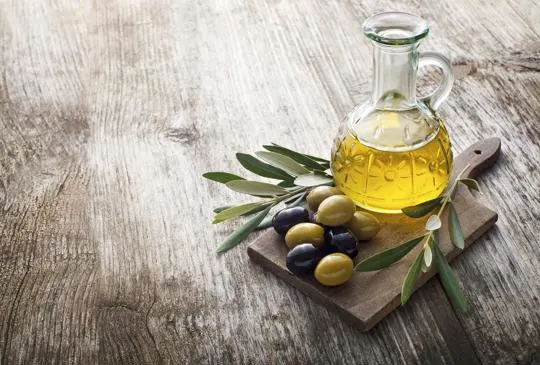Summary of key points
The main difference between robust and smooth olive oil lies in their taste and strength. Robust olive oil has a strong, bold flavor with a peppery finish that is characteristic of high-quality extra virgin olive oils. It’s best used for dipping, dressings, or finishing dishes to add a burst of flavor. On the other hand, smooth olive oil has a milder taste and is often used for cooking, as it won’t overpower the other flavors in a dish. It’s also a great option for baking or making homemade mayo. When choosing between robust and smooth olive oil, consider the purpose it will serve in your recipe to ensure the best results.
Olive oil isn’t just a liquid gold in our kitchens; it’s a tale of two flavors. Robust versus smooth. Think of them as the dynamic duo of the oil world. We all have our preferences, right?
Our kitchens have seen it all. From bold, peppery punches to gentle, buttery caresses on the palate. Why this drama? It’s all about the olives.
We’ve had our battles. Drizzling robust olive oil, expecting a smooth jazz, but getting rock instead. It’s the olive types and the press that dictate the beat.
Smooth oils whisper. They’re for those tender moments. Salad dressings or a subtle finish.
Robust ones roar. They command attention in hearty dishes.
In our culinary journeys, we’ve learned this: The right oil can elevate a meal from good to unforgettable.
What is Robust Olive Oil?

Robust olive oil has a unique flavor profile.
It’s made from green olives, harvested early, that give it a strong bitterness and pungency.
This type of oil adds depth and complexity to dishes, with a pepper-like, grassy or fruity taste.
It pairs well with bold flavors, like grilled meats, strong cheeses and hearty stews.
It also contains beneficial antioxidants and healthy fats, linked to reducing inflammation and improving heart health.
To find the right robust olive oil for you, look for labels indicating it’s from early harvest or specifying its robustness.
You may have to experiment to find the perfect intensity.
What is Smooth Olive Oil?

Smooth olive oil is called extra virgin. It’s made by cold pressing olives.
Its texture is rich and smooth. Its flavor is delicate and great for salads or finishing.
It has low acidity and high monounsaturated fats, which are good for your heart.
Plus, it has antioxidants to protect against inflammation and oxidative stress.
Store it in a cool, dark place to keep its flavor and quality.
Differences Between Robust and Smooth Olive Oil

Robust and smooth olive oil may look similar, but there are big differences.
Flavor Intensity
Flavor intensity is key when it comes to distinguishing different types of olive oil.
Robust olive oil offers a powerful flavor, with a peppery and sometimes bitter taste.
It works great for hearty stews and grilled meats.
Smooth olive oil, on the other hand, has a milder flavor and brings out the flavors of other ingredients.
The production process also matters, as olives harvested early in the season generate a more intense flavor than ripe olives.
Ultimately, it’s up to personal preference and the dish you’re making.
Whether you go for a bold taste or a more subtle flavor, both options will take your cooking to the next level.
Bitterness and Peppery Notes
Bitterness and peppery notes are key when distinguishing robust from smooth olive oils.
Compounds like oleuropein, contain health benefits and create a peppery sensation at the back of the throat.
Robust olive oils have a stronger flavor profile, made from green or unripe olives.
Smooth olive oils come from ripe olives and have a milder taste.
It’s all about personal preference when deciding between robust and smooth olive oils.
To further understand these flavors, tastings and guidance from professionals can be beneficial.
Consumers can then make a more informed choice when selecting their olive oil.
Ingredients and Processing
Olive oil has unique characteristics that come from its ingredients and processing techniques.
What kind of olives are used is key in determining the flavor and texture.
Green or black, ripe or unripe? It all makes a difference.
Robust olive oils need a more vigorous extraction process.
This is done by crushing the olives with their pits in, making an oil with a bold flavor.
Smooth olive oils, however, have their olives pitted before they are pressed, giving a milder taste.
Temperature control and duration also affect the final product.
Robust olive oils require higher temperatures and shorter durations to bring out their intense flavors.
For smooth ones, lower temperatures and longer durations are used to create a smoother taste.
Both robust and smooth olive oils have their own benefits and can be used in various recipes.
The choice between them depends on personal preference and what outcome is desired.
Culinary Uses
Olive oil is popular in Mediterranean cuisine but also has many global culinary uses.
Its distinct flavor is great for dressings, marinades, and dips.
It can be cooked with, due to its high smoke point.
The robust variety adds a bold taste to dishes like roasted veggies and grilled meats.
Both types are healthy replacements for butter and margarine in baking recipes.
Smooth olive oil is ideal for salad dressings because it blends nicely with vinegar or citrus juices.
It lets the flavors of other ingredients stand out, creating a balanced flavor.
It is also great as a marinade for proteins, tenderizing them while bringing out their natural flavors.
Robust olive oil is best for intensifying dishes with its strong taste.
Its peppery notes and bitterness bring depth to recipes like pasta sauces and soups.
Drizzled over roasted vegetables or grilled meats, it gives an extra richness.
Olive oil can make desserts delicious too.
Smooth oil adds a moist texture and fruitiness to cakes and ice cream.
Robust oil adds an interesting flavor to dark chocolate, or to savory-sweet pairings like olive oil-infused cookies.
The type of olive oil you choose depends on the desired flavor profile.
Smooth oil is elegant and versatile. Robust oil brings vigor and intensity.
Experiment with both and let your culinary creativity go wild.
Your taste buds will thank you.
Similarities Between Robust and Smooth Olive Oil

Robust and smooth olive oil may differ in flavor, but they have similarities too.
Both come from olives and offer great health benefits.
They’re rich in monounsaturated fats that lower bad cholesterol levels and reduce heart disease risk.
Additionally, they can make dishes more flavorful.
Despite their differences, robust and smooth olive oil provide a common base for a healthy and delicious culinary experience.
Similarities include their origin.
Both derived from olives and have similar extraction processes.
This means no excessive heat or chemicals are used to get the oil.
This way, they keep their natural qualities and nutrition.
Both robust and smooth olive oil also offer health benefits.
They contain high levels of monounsaturated fats, which lower LDL cholesterol and promote heart health.
They also have antioxidants that protect the body from free radicals.
In terms of flavor, robust olive oil has a stronger taste with hints of bitterness and pepperiness.
Whereas, smooth olive oil has a milder flavor with fruity notes.
Either type can make dishes more interesting by enhancing their flavors or being a base for dressings or marinades.
How to Choose Between Robust and Smooth Olive Oil
Confused about which olive oil to choose? Robust or smooth? With so many options, it’s essential to know the difference.
Both have unique characteristics that can make your cooking experience better.
Robust olive oil has an intense flavor with a peppery aftertaste.
It’s made from early-harvested olives which give it a strong taste.
Perfect for stews, grilled veg and bread.
It adds depth to your meals.
Smooth olive oil is milder and smoother on the tongue.
This type is made from later-harvested olives.
Suitable for salads, light sautés and more.
Its subtle flavor doesn’t overpower other ingredients.
When deciding, consider intended use and personal preference.
Robust for a bold flavor. Smooth for a subtle taste or everyday cooking.
Remember to look for “extra virgin” olive oil.
This means it’s pure and hasn’t been processed or blended.
Also check the country/region of origin for flavor profile.
Conclusion
We have now seen how robust and smooth olive oil vary in terms of taste, texture, and aroma.
While both types of olive oils have their own unique properties that make them great for certain recipes, ultimately the best olive oil for you depends on your personal preferences and what you plan to use it for.
If you’re interested in trying out a new type of cooking with bold flavors, then robust is the way to go.
On the other hand, if you plan to use your olive oil as a finishing touch or are looking for something more subtle in flavour, then opt for smooth olive oil instead.
No matter your choice, don’t forget to experiment with different kinds of aromas by adding fresh herbs or infusing extra flavours like garlic or chillies.
Having an open-mind when exploring different types of cuisine will help expand your culinary horizons and create delicious dishes.

Leave a comment